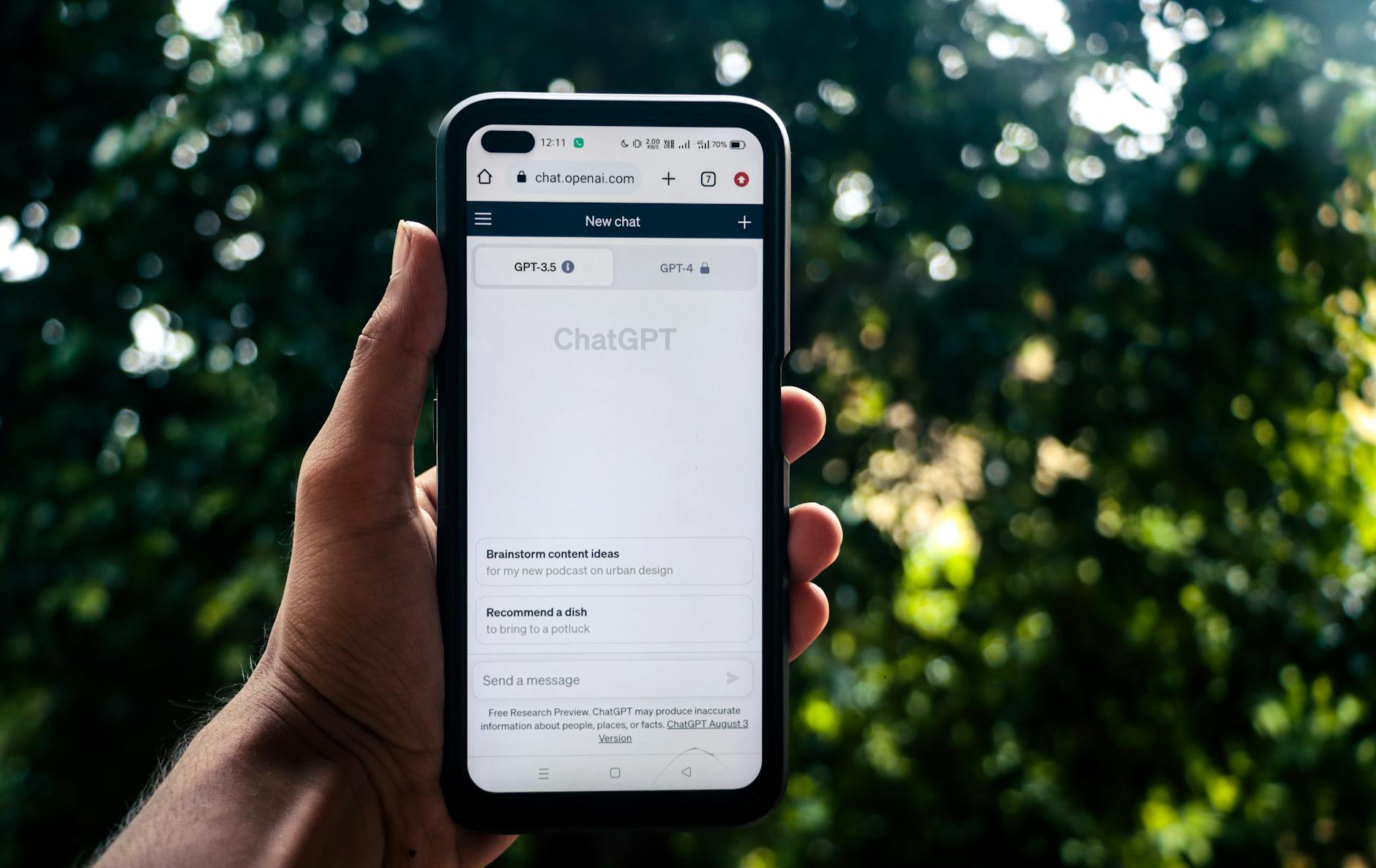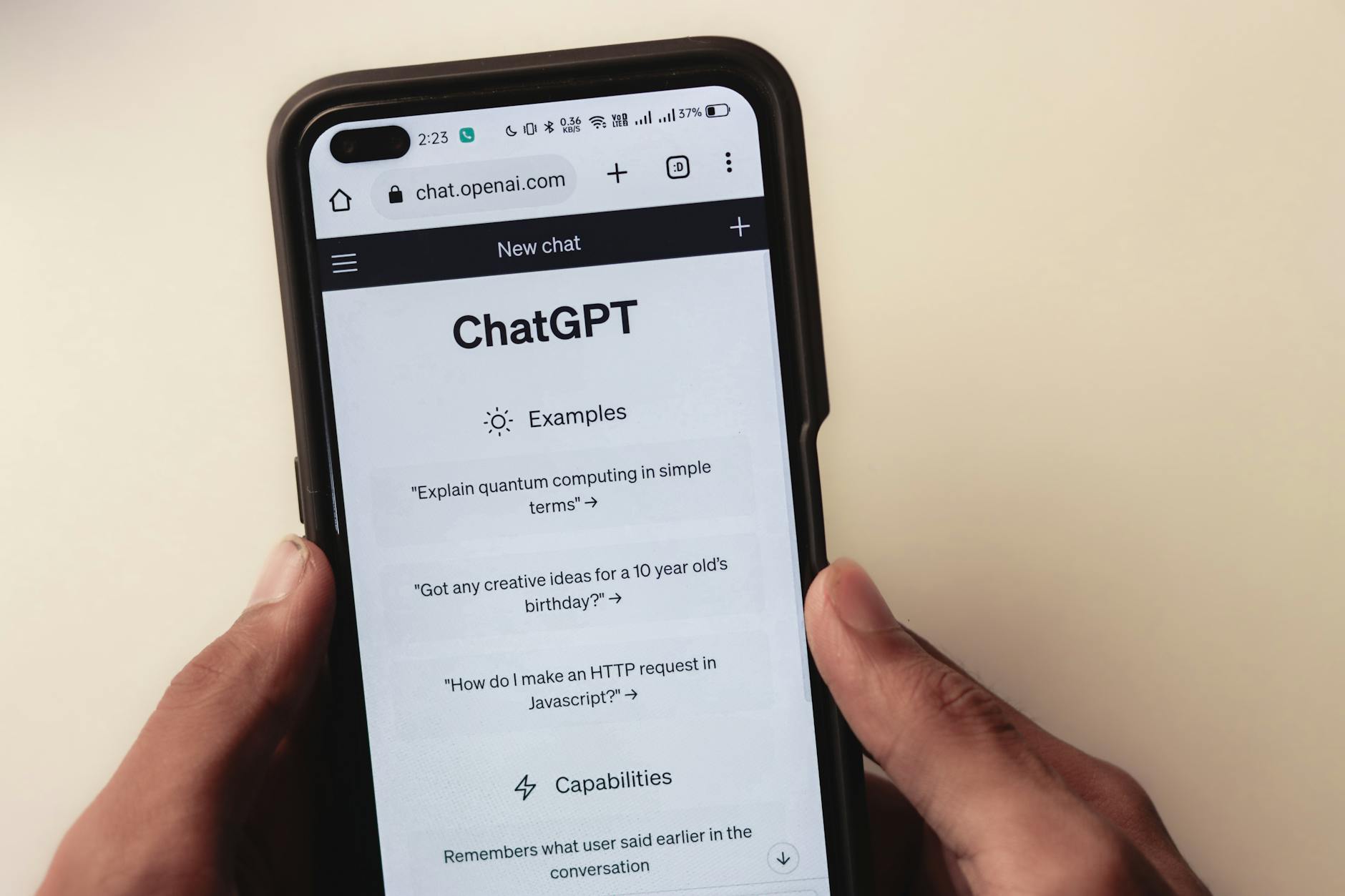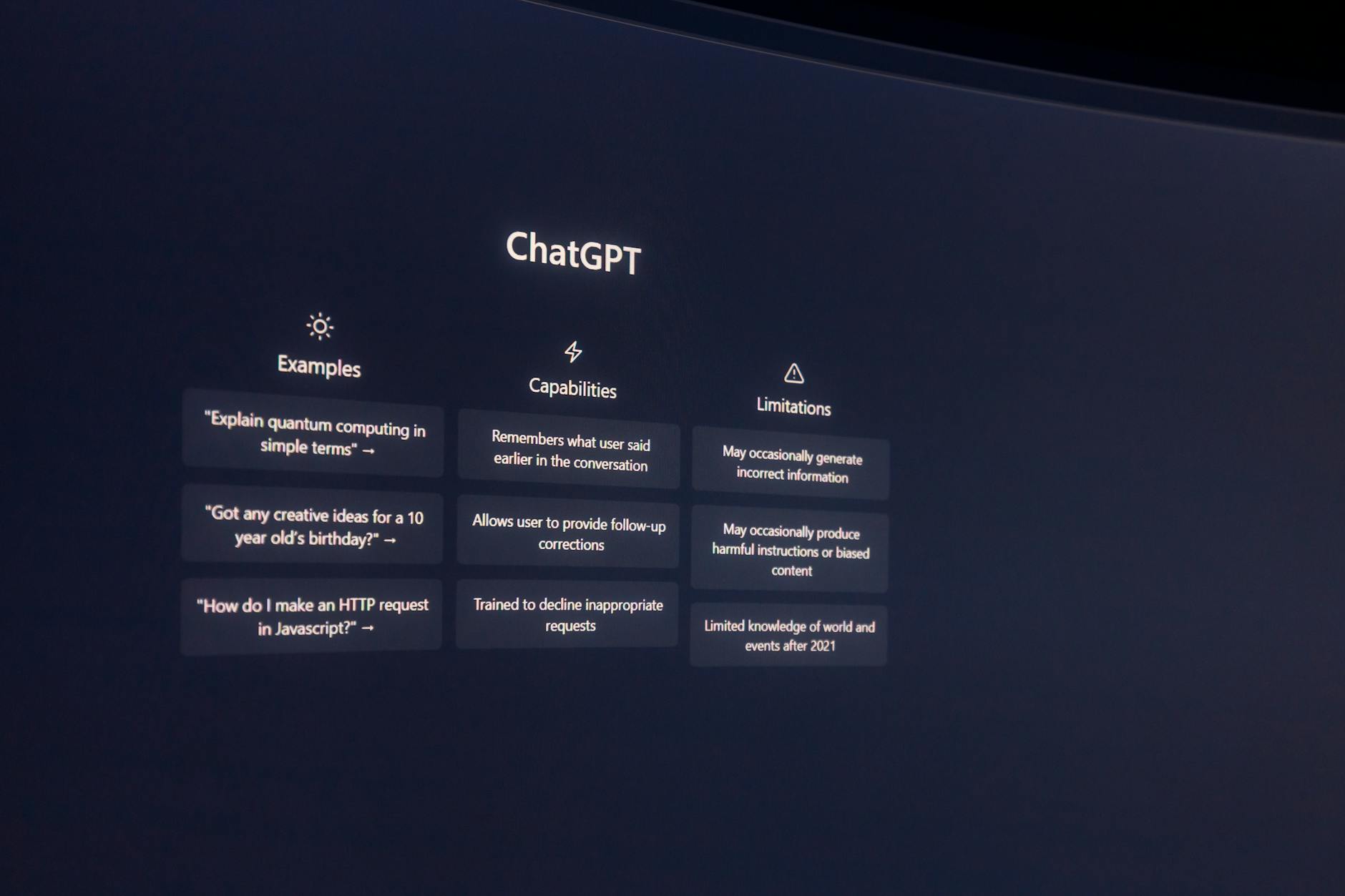What Is an AI Prompt? (And How to Write One That Works)
Ever found yourself wondering what people mean when they talk about an “ai prompt”?
You’re not alone. An ai prompt is simply a message or set of instructions you give to an AI tool—like ChatGPT—so it knows how to help you.
As AI becomes part of daily life, learning to write a good prompt makes it easier to get helpful and accurate answers, even if you’re just starting out.
Knowing how ai prompts work puts you and your family in control, whether you want quick homework help or time-saving tips for busy evenings.
I’m going to break down what an ai prompt really is, why it matters, and how you can start using them today. If you’re curious about making AI work for your family, you might also like my guide on AI fundamentals for moms. Let’s keep it simple and make AI less intimidating for everyone.
What Is an AI Prompt?
Ever tried typing a message into ChatGPT or another AI tool and wondered how your words turn into smart answers? That’s the magic and power of the “ai prompt.”
An ai prompt is simply what you type or say to the AI—your question, request, or even a scenario. It’s your way of getting the most helpful, creative, or accurate response back. The better your prompt, the better the answer.
Let’s break down how this exchange works and explore the most common types of prompts.
How AI Prompts Work
 Photo by Sanket Mishra
Photo by Sanket Mishra
When you send an ai prompt, you’re giving instructions to the AI—kind of like asking a friend for help. The AI doesn’t “think” the way people do, but it can spot patterns in your words and quickly figure out what kind of answer you want. It matches your input to what it knows (lots of text, patterns, and previous answers) to deliver a response.
If you say: “Give me a recipe with chicken and carrots,” the AI understands you’re hungry for ideas and replies with something useful.
Key things to know about prompt-response interactions:
- AI looks for clues in your prompt to understand your goal.
- Clear prompts help AI answer accurately or creatively.
- Feedback loop: If you rephrase or clarify after an odd answer, the AI learns what you want and improves its reply.
Want a deeper look at how user input shapes AI responses? Check out this guide on how AI agents understand user inputs for a simple overview.
Common Types of AI Prompts
You can interact with AI in more than one way. I recommend talking to it the way you would want to be talked to. You have to remember to “teach” it as well.
Here are the most popular types of ai prompts, with everyday examples you can try at home:
- Questions
Ask something, and the AI answers.
Example: “What are three easy breakfast ideas for kids?” - Commands
Tell the AI to do something specific.
Example: “Summarize this news article.” - Roleplays
Pretend or set up a role for the AI to follow.
Example: “Act as a friendly tutor and explain fractions simply.” - Creative Writing
Ask for stories, poems, or lists that spark creativity.
Example: “Write a bedtime story about a cat on a space adventure.”
Trying different prompt styles is a great way to figure out what works best with your favorite AI apps. If you want more ways to use AI with your kids or family, my post on ways to use AI for kids and teens might inspire you.
Each type of ai prompt has its strengths. Play around with them, see what kind of answers you get, and tweak your prompts for better results each time.
Why Writing an Effective AI Prompt Matters
How you write an ai prompt can change everything, especially when you want useful, easy-to-understand answers fast.
A prompt is the bridge between what you want and what AI delivers.
Get it right, and you’ll save time, avoid stress, and often get a better result.
Miss the mark, and AI can get confused, give the wrong information, or leave you with more questions than answers. Whether you’re using AI to help with homework, meal planning, or simple family tasks, the way you phrase your prompt truly matters.
Benefits of Clear AI Prompts
A clear ai prompt pays off in many ways, both at home and beyond.
 Photo by Markus Winkler
Photo by Markus Winkler
Some of the biggest advantages include:
- Improved Accuracy: Precise prompts tell the AI exactly what you want. This means answers that fit your needs, whether it’s a recipe for a picky eater or a science summary for your child’s report. Clear requests lead to accurate, helpful answers.
- Fewer Misunderstandings: When you leave little room for confusion, the AI is less likely to mix things up, saving you the headache of re-explaining.
- Time Savings: Instead of going back and forth, you get what you need in fewer tries. That comes in handy for busy families juggling schedules. Keeping it clear, saves you so much time and teaches YOU how to interact with it better.
- Confidence in Results: Clear prompts make it easier to trust the answers you receive, since they’re less likely to be off-base or oddly worded.
- Better Family Collaboration: If you’re teaching your kids how to use AI, showing them how to write clear prompts means smoother interactions—and less frustration for everyone.
- Greater Creativity: By being specific, you can guide the AI to respond in a way that sparks creative ideas, whether you need fun weekend plans or bedtime stories for your kids.
Prompting doesn’t need to be complicated or even difficult. I always remind families that a prompt doesn’t have to be perfect, just clear. You can also review my tips on AI use for busy moms and their children, which drill down on how clear communication helps you get the most out of your ai prompt.
Challenges of Vague or Poor AI Prompts
On the flip side, unclear prompts can make things a lot harder.
When your ai prompt is too broad or lacks details, the AI may not know what you want. Problems that often pop up include:
- Irrelevant Answers: If the request is general, AI may give back information that’s off-topic, which means more wasted time.
- Repeated Questions: You might have to keep asking or clarifying what you mean, turning a quick task into a drawn-out back-and-forth. Like talking to a toddler – why? why? why?
- Frustration for Beginners: If you’re new to AI, unclear prompts can make it seem like the tool “doesn’t get you,” when it just needs better instructions.
- Miscommunication: Sometimes, AI can interpret vague prompts in a way you didn’t expect, leading to confusion or even silly answers.
- Extra Work: When the result isn’t helpful, you spend even more time refining your prompt.
Even small amounts of ambiguity or missing information can lead to poor results. This blog post on common AI prompt mistakes shares ways broad requests (“Tell me about dinner”) often leave you with an answer that’s either too broad or not helpful.

If you or your family want more help troubleshooting prompts, my step-by-step tips on solving common AI problems at home walk through ways to fix things when AI doesn’t seem to “get it.”
Remember, a clearer request usually means a better, faster answer, and that’s what every beginner wants when starting with AI.
How to Write an AI Prompt That Works
Writing or saying an ai prompt that gets you solid, useful results doesn’t have to be hard. A good prompt acts like clear directions to the AI, setting it up for success. Below, I’ll break down simple strategies to help anyone—especially beginners—write prompts that actually work and make daily life easier.
Be Clear and Specific
Vague instructions leave AI guessing. Clear prompts tell the AI exactly what you need. The difference is like asking someone, “Can you help?” versus “Can you help me find easy chicken recipes for dinner?”
Let’s look at real examples you might use at home:
Vague Prompt:
- “Tell me about dinosaurs.”
This could give you anything from a kids’ book summary to advanced paleontology.
Clear Prompt:
- “List five interesting facts about dinosaurs for a school science report on prehistoric animals.”
Now the AI knows the purpose and who it’s for.
Common Beginner Mistakes and How to Fix Them:
- Using single-word queries (“Homework?”) instead of full sentences.
- Leaving out age or skill level (“Explain fractions” vs. “Explain fractions to a third grader”).
- Forgetting the goal (“Recipes” vs. “List three quick dinner recipes using chicken and carrots”).
How to Rewrite for Clarity:
- Combine what, who, and why:
- Instead of “Math help,” try “Explain how to multiply fractions for my 10-year-old.”
Simple, specific requests get better AI answers.
Use Context and Details
Context is a big helper for AI. Adding a little background lets the AI give responses that fit your real situation. Think of it as telling a friend why you’re asking—AI needs that same nudge.

Photo by Sanket Mishra
Ways to Add Context:
- Say who it’s for (“for my 8-year-old,” “for a busy weeknight,” “for a family camping trip”).
- Share your goal (“help me understand photosynthesis for a quiz”).
- Give examples or ingredients (“using only chicken, carrots, and rice”).
- Add the format you want (“in a list,” “as a poem,” “two paragraphs long”).
Example Prompt Before and After:
- Before: “Write a bedtime story.”
- After: “Write a short bedtime story for a 7-year-old about a brave dog who finds a lost toy at the park.”
Try including these extra details in your requests. You’ll notice the answers start sounding like they were made just for you or your family. The essentials of effective prompts are also laid out in this MIT guide to effective prompts, which highlights how context improves AI responses.
If you want more pointers on creating prompts that fit family needs, check out my advice on ways families can use AI for everyday life.
Test and Improve Your Prompts
AI is powerful, but sometimes you won’t get the best answer on your first try. That’s okay! Testing and tweaking your prompt is normal. If the AI’s answer is off, change your request with more details or a different approach.
Tips for Everyday Tweaking:
- Change your wording: If “summarize this article” is too broad, switch to “summarize this article in three sentences for my child’s school project.”
- Add limits: Request a certain style or word count.
- Break tasks down: Instead of a huge, all-in-one prompt, split it into steps.
Quick Fixes When Results Miss the Mark:
- Was your request too broad? Add more details about your goal.
- Did you get too much information? Ask for a summary or fewer points.
- Was the language too hard or too simple? Specify the age group or level.
You can always edit your prompt and see how the AI’s answer changes. Improving prompts is a skill you’ll develop quickly.
And if you run into common problems, see my breakdown of solving AI issues with simple prompt changes at home. With some trial and error, writing ai prompts that actually work becomes second nature.
Tips and Tools for AI Prompt Beginners
Starting out with AI prompts doesn’t have to be hard, but it’s normal to hit a few bumps at first. If you’re new to AI, having the right approach and some practical tools can make your experience smoother. In this section, I’ll break down the key tips for beginners and highlight helpful tools that make writing ai prompts much easier and more effective.
Start Simple and Build Up
Trying to do too much at once often leads to frustration.
Begin with short, direct prompts.
As you get the hang of it, add more detail or ask for a new style. This helps you see how AI responds to different requests without getting tangled in complicated wording.
- Use clear language: Write your prompt as if you’re texting a friend.
- Ask for what you need: Be direct. If you want a list, ask for a list. If you need a summary, say so.
- Try different prompt types: Experiment with questions, commands, or roleplay scenarios—whatever fits your goal.
If you’re looking for more beginner tips, this OpenAI community guide for diverse prompt applications has easy examples for all levels.
Common Beginner Mistakes (and How to Fix Them)
Many first-timers make similar mistakes. Don’t worry—it’s easy to turn things around with a few simple tricks.
- Being too vague: If a prompt is broad (“Tell me about math”), you’ll get a basic answer. Get specific: “Explain division for a third grader.”
- Making prompts too complex: Combining multiple ideas can confuse AI. Stick to one topic at a time.
- Ignoring feedback: If an answer isn’t right, adjust your prompt and try again.
Need more fixes? This Forbes list of common prompt writing mistakes offers step-by-step solutions for everyday issues.
Try AI Prompt Helpers and Tools
Plenty of free and simple tools can assist you when you’re unsure how to phrase an ai prompt:
- Prompt templates: Some AI sites offer preset templates for common requests like brainstorming or summarizing.
- Built-in suggestions: Tools like ChatGPT often suggest ways to rephrase prompts after an unclear answer.
- Browser extensions: Extensions like AIPRM and others add quick prompt buttons to your browser, offering ready-made ideas or prompt auto-completion.
 Photo by Andrew Neel
Photo by Andrew Neel
Build Confidence With Practice
Practice is the best way to get comfortable, and you don’t need expensive software to try new ideas. Most text-based AI tools are free or inexpensive. Try daily prompts for small tasks:
- Ask for a dinner recipe with only three ingredients.
- Have the AI write a quick summary of your favorite show.
- Play “quiz master” and let AI make questions for the family.
Each time you practice, you build skill and confidence. For more family-focused ways to use ai prompts, check out my at-home AI tips for families.

Save and Reuse Your Best Prompts
Don’t reinvent the wheel. Keep a running list of prompts that work well for you or your family. Whether you save them in a note on your phone or a shared document, having go-to phrases makes AI help even quicker next time.
- Example saved prompts:
- “Summarize this article for a 10-year-old.”
- “Give me a list of easy science project ideas.”
- “Explain how recycling helps the environment in two sentences.”
Simple tweaks and a bit of trial and error go a long way.
As you keep practicing, prompt writing becomes second nature—just like texting a friend. And if you’re interested in how AI can help beyond prompts, I share more about easy AI basics and family usage elsewhere on my blog.
Real-Life Examples: AI Prompts That Work
Seeing real examples is the best way to understand how well-written ai prompts make everyday life smoother. Whether you need to keep track of your family’s busy schedules, help your child with homework, or come up with fun, fresh ideas, a good ai prompt can save time and reduce stress. Below, I’ll share simple, beginner-friendly prompts you can try right away.
Prompt Example: Organizing Family Schedules

Photo by Matheus Bertelli
Coordinating a family calendar can feel like juggling too many balls at once. With the right ai prompt, you can quickly create, adjust, or review schedules in one easy step. Here’s how I make it work:
- Prompt: “Create a weekly family schedule for two working parents, a child in school, and after-school soccer practice on Tuesdays and Thursdays. Include space for meals and 30 minutes of reading each day.”
- The AI returns a clear, day-by-day breakdown—ready for you to copy or print.
If you need reminders or want to combine work and home calendars, just tweak the prompt with more details. For parents starting out, prompts like these help keep everyone on track with less back-and-forth.
Prompt Example: Helping with Homework
Homework struggles are common in most homes, especially with new school topics. A detailed ai prompt can help your child understand a lesson or finish a project more confidently. Here’s a real prompt I’ve used:
- Prompt: “Explain how photosynthesis works in simple terms for a 10-year-old’s science homework. Give one easy example.”
- You get an answer in plain language, making it simple for your child to grasp the concept.
If your child is stuck on math, you might change your ai prompt to:
“Show me how to multiply two fractions using step-by-step instructions, written for a fourth grader.”
The AI will outline the process clearly—often with examples—so your child can follow along. This approach is perfect for families new to AI.
Prompt Example: Creative Activities and Fun Ideas
Running out of after-school activity ideas is a common headache. With the right ai prompt, I always discover fresh things to try—indoors or out. Here’s a prompt that works well:
- Prompt: “List five creative, screen-free activities for a rainy Saturday for kids ages 6-10, using materials found at home.”
- AI replies with suggestions like treasure hunts, homemade obstacle courses, or simple crafts—which leads to less boredom and more fun.
For birthday parties or family gatherings, adjust the prompt with the number of kids, ages, or any themes. You can even ask for full instructions on one idea. Building prompts like this into your routine gets your family off screens and into new experiences. You’ll find more family-tailored ideas in my roundup of ways families can use AI for everyday life.
Learning to write prompts isn’t hard—it just takes a little testing and a few personal touches. These real-world examples show how anyone can make AI answers more useful with just a sentence or two. Try these for yourself, and watch how simple it is to get answers that fit your family.
Do You Understand What A Prompt Is?
Understanding what an ai prompt is—and how to write one—puts you in the driver’s seat when using AI tools for daily tasks. A well-written ai prompt saves time and avoids confusion, making your experience smoother whether you’re solving homework challenges, organizing schedules, or finding creative ideas for your family.
It’s easy to get started: begin with short, clear requests, add a bit of context, and don’t be afraid to tweak your prompts for better results. You’ll gain confidence as you try new ideas, and soon writing prompts will feel as natural as sending a text.
If you want more beginner-friendly advice, my simple guide on AI basics for moms breaks things down even further. For practical ways to use AI in daily family life, see my tips on using AI at home.
Share On Pinterest!










